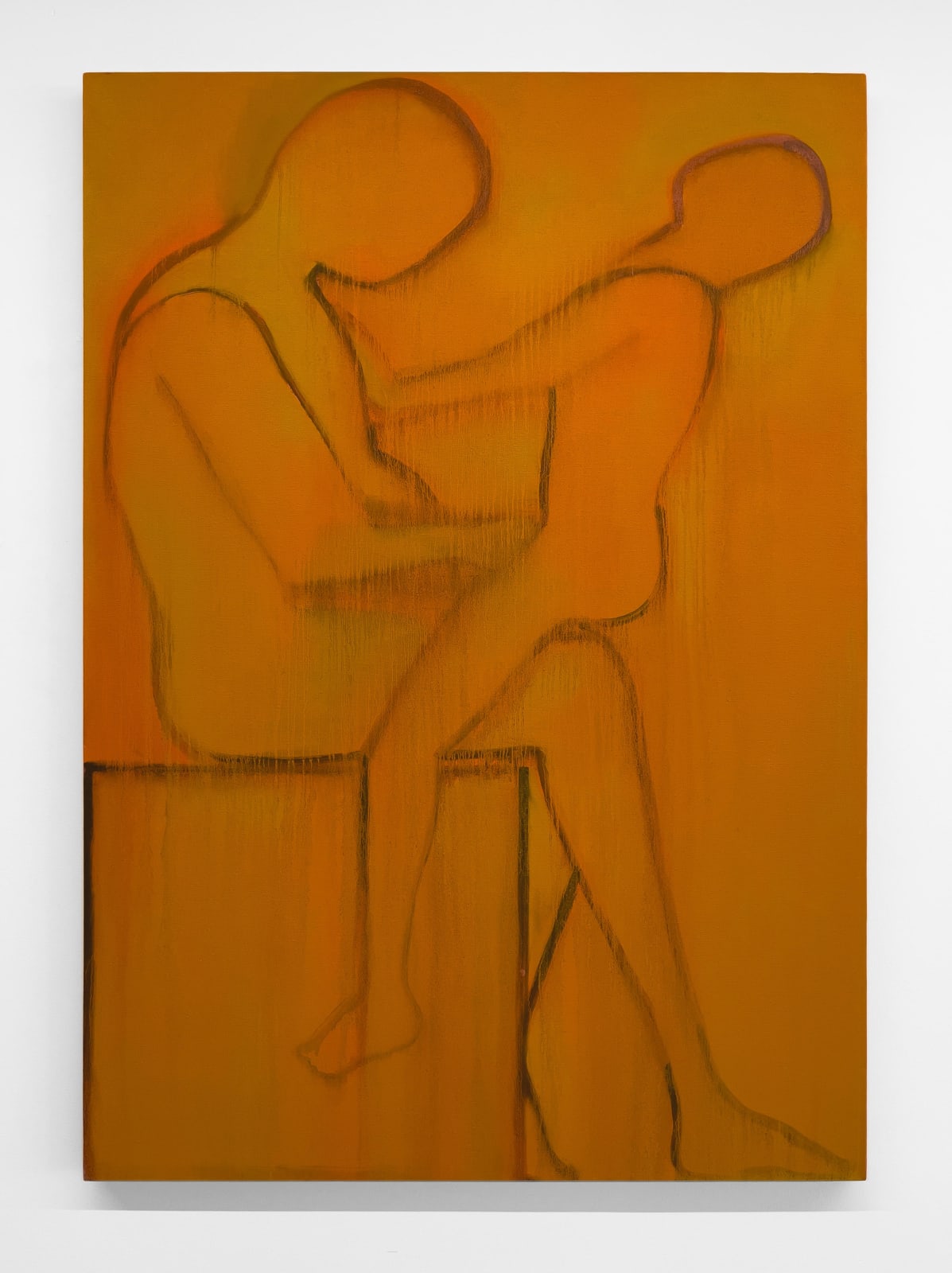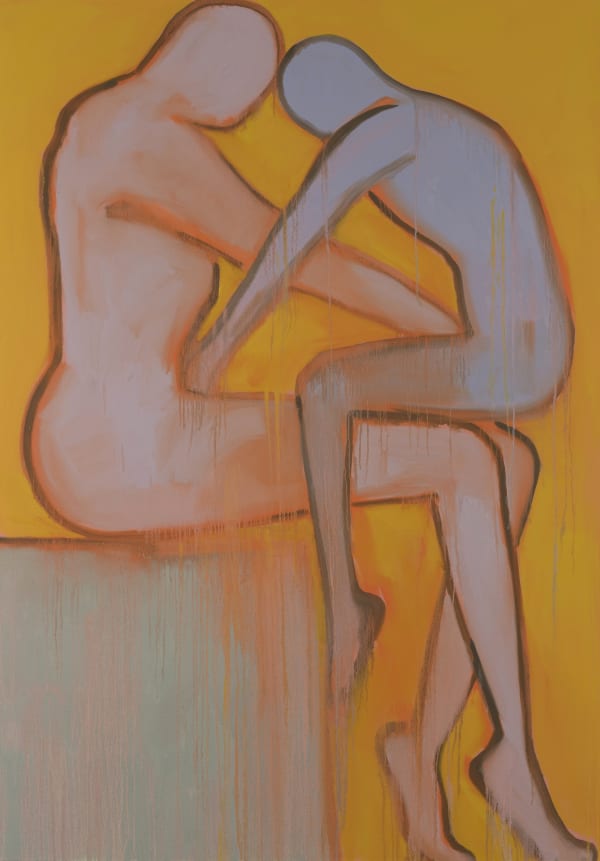
Francesco Clemente Italy, b. 1952
The Ford in the River II, 2019
oil on linen
170.18 x 119.38 cm
67 x 47 in
67 x 47 in
%3Cdiv%20class%3D%22artist%22%3EFrancesco%20Clemente%3C/div%3E%3Cdiv%20class%3D%22title_and_year%22%3E%3Cspan%20class%3D%22title_and_year_title%22%3EThe%20Ford%20in%20the%20River%20II%3C/span%3E%2C%20%3Cspan%20class%3D%22title_and_year_year%22%3E2019%3C/span%3E%3C/div%3E%3Cdiv%20class%3D%22medium%22%3Eoil%20on%20linen%3C/div%3E%3Cdiv%20class%3D%22dimensions%22%3E170.18%20x%20119.38%20cm%3Cbr/%3E67%20x%2047%20in%3C/div%3E
The title A Ford in the River refers to the fact that in 2018 Clemente attended the Kumbh Mela, a religious event consisting in the ritual collective crossing of a...
The title A Ford in the River refers to the fact that in 2018 Clemente attended the Kumbh Mela, a religious event consisting in the ritual collective crossing of a river.
The Kumbh is a ritual gathering in a tent city erected on banks of the Ganges and attended by sixty million people over a period of three months. At the Kumbh Mela Clemente painted a group of watercolors on handmade paper which are the basis for the five canvases which were then executed in New York.
The five canvases are painted in vibrant hues, ranging from intense orange and yellow tones, reminiscent of the colors of dawn, to the most subtle and delicate mauves and pinks of the sky at dusk. These paintings remind one of the colors one sees only in India and confirm the artist’s status as one of the premier colorists of our times. Veiled by thin lines of dripping colors, contrasting lines mark the silhouettes of two figures, reduced to an essential outline, bold while made anbiguous by the fluidity of the color palette.
The two figures in ‘A Ford in the River’ escape any clear categorization: they are neither clearly identifiable as man nor woman, nor do they belong to a race or an age range, they could even be images of the same person seen at different moments, memories of a self revisiting and interrogating a former or future self.
One of the ways Francesco Clemente’s work has been described is as a practice aiming at the evaluation of the arcane, in its traditional sense: “In pre-industrial societies the arcane played a crucial role in enabling people to adapt to crisis.
It was the language by which people emerged from loss with a renewed sense of what was perceived as the sacred in life, where the sacred meant a collective treasure of the ways and the languages nature offers for survival.”
In a world dealing with a crisis, the intimate and sensual interaction of Clemente’s two figures, their concise rendering of human form and of human empathy, at rest in a pure realm of color, may be a reminder of the need to restore the healing power of the sense of the sacred.
The Kumbh is a ritual gathering in a tent city erected on banks of the Ganges and attended by sixty million people over a period of three months. At the Kumbh Mela Clemente painted a group of watercolors on handmade paper which are the basis for the five canvases which were then executed in New York.
The five canvases are painted in vibrant hues, ranging from intense orange and yellow tones, reminiscent of the colors of dawn, to the most subtle and delicate mauves and pinks of the sky at dusk. These paintings remind one of the colors one sees only in India and confirm the artist’s status as one of the premier colorists of our times. Veiled by thin lines of dripping colors, contrasting lines mark the silhouettes of two figures, reduced to an essential outline, bold while made anbiguous by the fluidity of the color palette.
The two figures in ‘A Ford in the River’ escape any clear categorization: they are neither clearly identifiable as man nor woman, nor do they belong to a race or an age range, they could even be images of the same person seen at different moments, memories of a self revisiting and interrogating a former or future self.
One of the ways Francesco Clemente’s work has been described is as a practice aiming at the evaluation of the arcane, in its traditional sense: “In pre-industrial societies the arcane played a crucial role in enabling people to adapt to crisis.
It was the language by which people emerged from loss with a renewed sense of what was perceived as the sacred in life, where the sacred meant a collective treasure of the ways and the languages nature offers for survival.”
In a world dealing with a crisis, the intimate and sensual interaction of Clemente’s two figures, their concise rendering of human form and of human empathy, at rest in a pure realm of color, may be a reminder of the need to restore the healing power of the sense of the sacred.
Exhibitions
Francesco Clemente : Bestiary 2020, MARUANI MERCIER, Brussels, September - October 2020
Share
- X
- Tumblr

